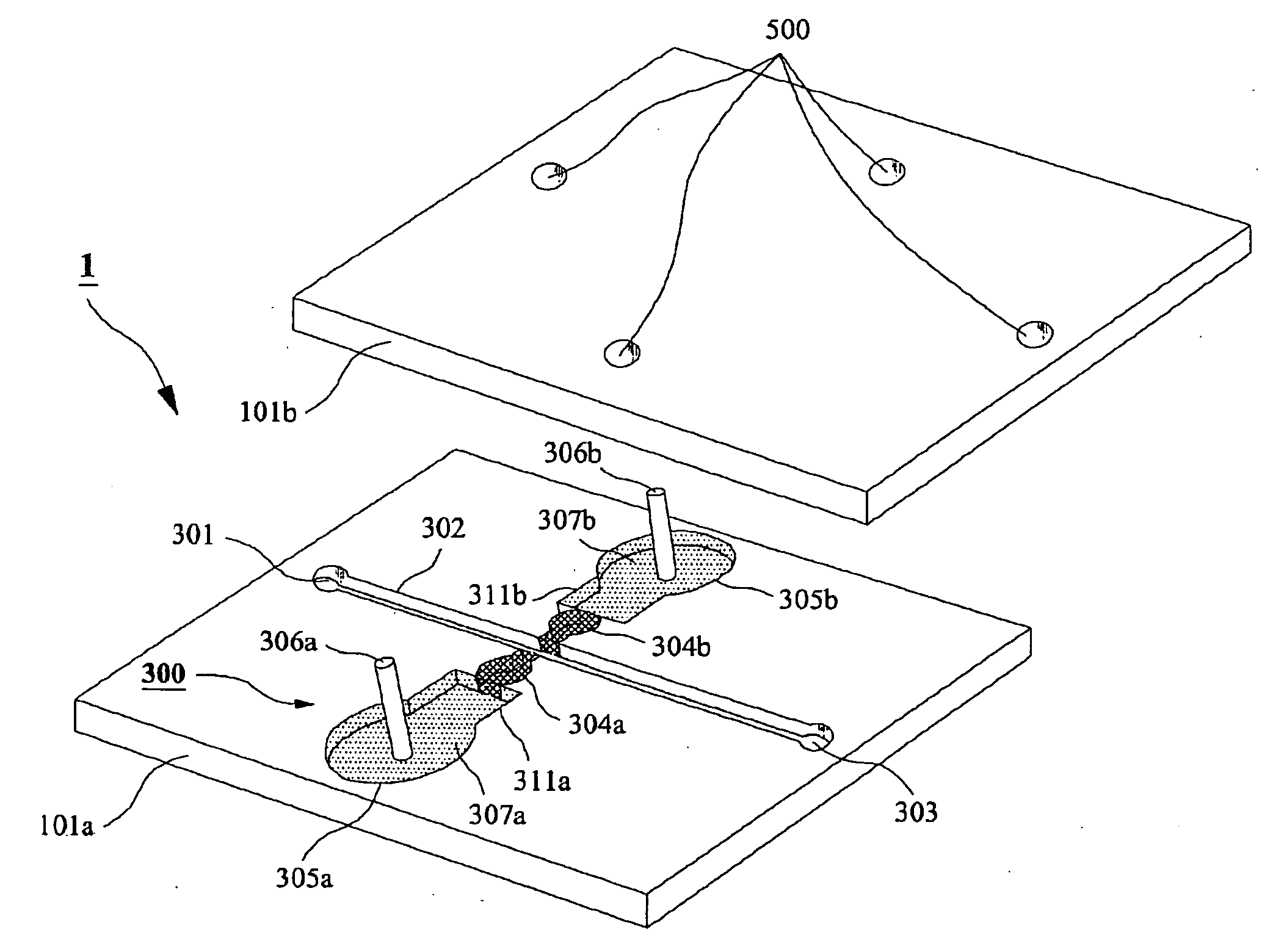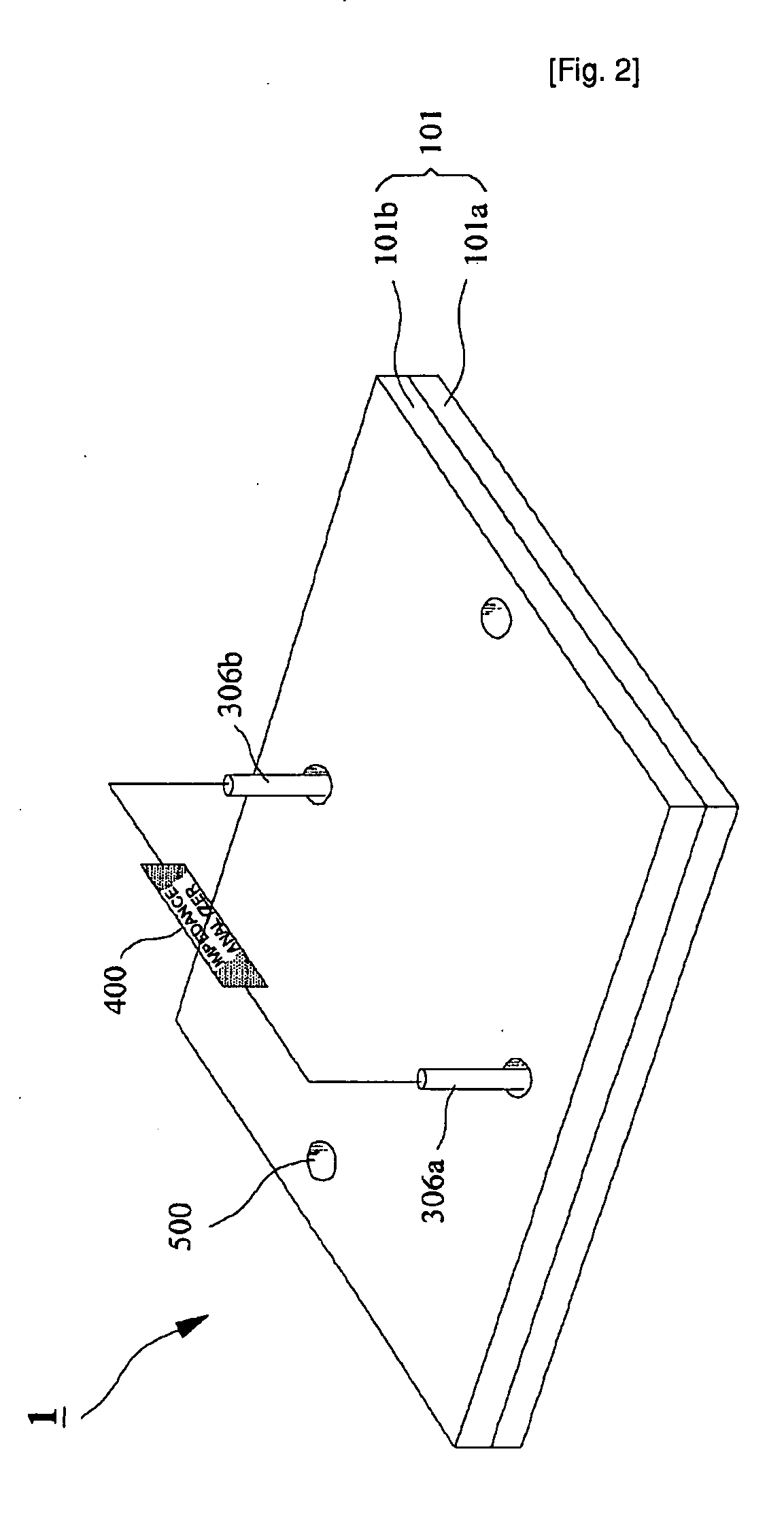Microchip For Use In Cytometry, Velocimetry And Cell Sorting Using Polyelectrolytic Salt Bridges
a microchip and cytometry technology, applied in the field of microchips, can solve the problems of affecting the quality of optical parts, the system under study is altered, and the idea has a few serious problems,
- Summary
- Abstract
- Description
- Claims
- Application Information
AI Technical Summary
Benefits of technology
Problems solved by technology
Method used
Image
Examples
examples
[0032]Microchip Fabrication
[0033]Corning 2947 precleaned slide glasses (75 mm by 25 mm, 1 mm thick) were used as substrates. A slide glass was cleaned in piranha solution (H2SO4:H2O2=3:1) for 1 h before washing the slide glass with deionized (DI) water (NANOpure Diamond, Barnstead, USA) and cleaned with acetone (CMOS grade, J. T. Baker, USA), methanol (CMOS grade, J. T. Baker, USA) and DI water twice sequentially. The cleaned slide glass was dehydrated on a 150° C. hot plate for 10 min and cooled down to room temperature. In order to modify the surface of the glass substrate, hydrophobic hexa methyl disilazane (HMDS) (Clariant, Switzerland) was spin-coated (Won corporation, Korea) at 4,000 rpm for 30 s on the slide glass, on which spin-coating of the photo resist (PR) of AZ5214-E (Clariant) was followed at 4,000 rpm for 30 s. After soft baking of photo-resist (PR) on a hot plate at 100° C. for 60 s, the slide glass was cooled down to room temperature and aligned under a pattern mask...
PUM
 Login to View More
Login to View More Abstract
Description
Claims
Application Information
 Login to View More
Login to View More - R&D
- Intellectual Property
- Life Sciences
- Materials
- Tech Scout
- Unparalleled Data Quality
- Higher Quality Content
- 60% Fewer Hallucinations
Browse by: Latest US Patents, China's latest patents, Technical Efficacy Thesaurus, Application Domain, Technology Topic, Popular Technical Reports.
© 2025 PatSnap. All rights reserved.Legal|Privacy policy|Modern Slavery Act Transparency Statement|Sitemap|About US| Contact US: help@patsnap.com



